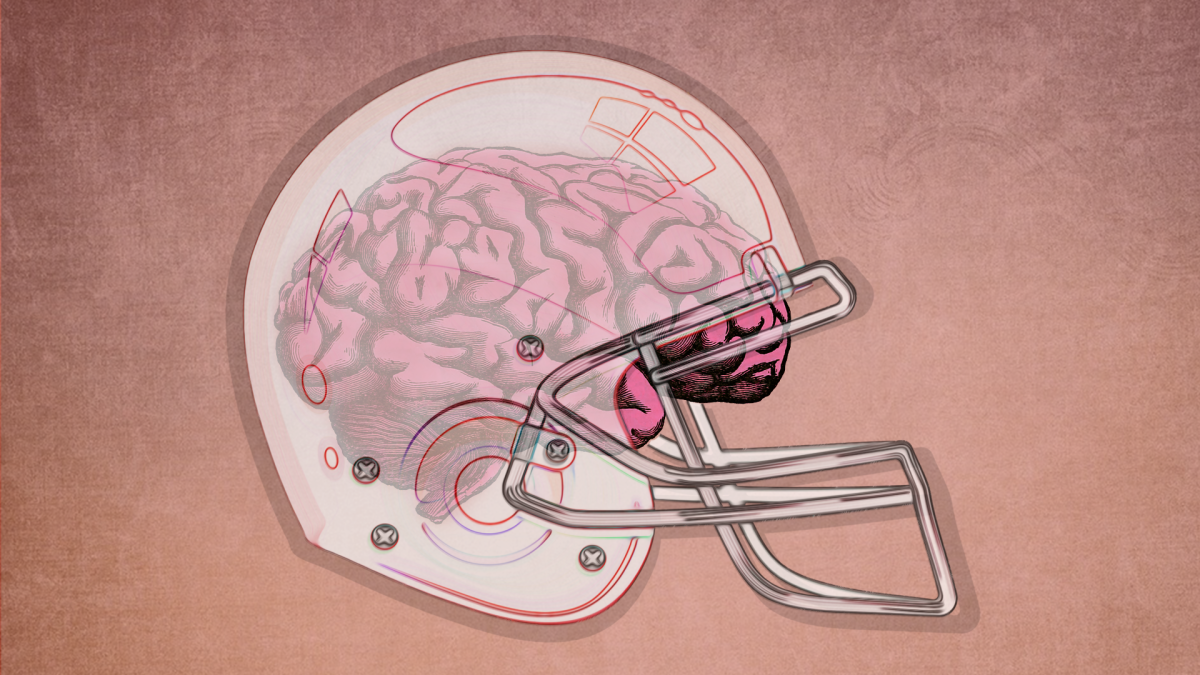Editor’s Note: This article contains explicit mentions of violence, including murder, and discussions of suicide.
Football’s hardest hits can change everything. For former NC State quarterback Grayson McCall, one violent tackle ended his career at just 23 years old.
On Oct. 5, 2024, McCall lay motionless on the field. The hit was so hard his helmet flew off, resulting in his second concussion of the season, and it would be his last. After being stretched off the field, there were only words of support and sympathy for him and his family. The Coastal Carolina transfer would hang up his cleats and retire for his own well-being.
“Unfortunately, my dream has been cut just short,” McCall wrote on Instagram. “As you all know, I have battled injuries my whole career, but this is one that I cannot come back from.”
The incident gained national attention. His recovery was close to immediate, but for many athletes, the risks emerge late on.
Chronic traumatic encephalopathy is a progressive brain disease that is caused by repetitive head injuries, such as concussions or subconcussive hits. Appearing years after the fact, CTE causes cognitive and neurological issues and alters a person’s mood and behavior. Memory loss, mood swings, confusion, depression, aggression, anxiety and paranoia are common symptoms. As of today, CTE can only be diagnosed postmortem.
“It’s kind of like a silent disease until it’s bad enough to really see big changes in behavior and deficits in how you think and remember, then and all of these emotional changes that occur depending on where the damage is done,” Scott Belcher said, a professor at NC State researching neuroscience.
Belcher said that chronic brain damage causes the glia, non-neural cells in the nervous system, to form permanent brain lesions. From this, dopamine levels drop, causing mood changes. It also causes tau protein buildup, causing brain cells to die. With dead brain cells, the brain begins to shrink, as seen many times when studying brains during autopsy, like that of former University of Florida and New England tight end Aaron Hernandez.
Coming into the NFL as a young star and a National Champion with the Gators, Hernandez was drafted in the fourth round of the 2010 draft. A talented collegiate player, Hernandez was drafted by the Patriots and helped lead them to the Super Bowl in his first season.
In 2013, Hernandez was charged with the murder of Odin Lloyd, his then-fiancée’s sister’s boyfriend. After trial, he was convicted of first-degree murder and sentenced to life in prison without the possibility of parole. Four years later, Hernandez was found in his cell, having died by suicide at the age of 27.
His brain was donated to Boston University’s CTE Center, which found that Hernandez had Stage 3 CTE. The scale of diagnosis for CTE is a four-stage scale. It noted that his case was the worst it had seen for someone his age. His brain showed signs of degeneration in his prefrontal cortex, the area of the brain that regulates impulse control and judgment. It was speculated that the disease was the cause of his aggression and erratic behavior.
Hernandez isn’t the only chilling example. On July 28 this past year, Shane Tamura entered a building on Park Avenue in New York City and killed four people, then himself. He left a note pleading to have his brain studied for CTE after playing football from a young age, similar to Hernandez. Two weeks ago, the New York Office of the Chief Medical Examiner confirmed that Tamura was officially diagnosed with CTE.
While the attention on CTE surrounds professional athletes, the risk starts much earlier than the NFL. Most professionals have been playing since at least middle school, some starting even earlier. According to ESPN, Tamura started playing at age six. Since CTE is caused by repetitive head injuries, starting football at a young age raises the risks.
Amid these tragedies, players and the league have looked for ways to reduce the risks. Many NFL players have begun wearing safer helmets in hopes of preventing brain injuries like the Guardian Cap. Famously, former Carolina Panthers linebacker Luke Kuechly wore a Q-Collar for the latter part of his NFL career, which was cut short due to injuries. Backed by the Food and Drug Administration, the Q-Collar is worn around the neck, causing more blood to flow to the head, preventing major movements of the head to stop the risks of concussions.
“There is so much more consciousness of it and the protections that are going into place,” Belcher said. “When I played, it was like, ‘Oh yeah, you just got your bell rung, get back up.’ … I think we’re in such a better place with it right now. That awareness and additional protection are definitely going in the right direction.”
In the United States, football is more than a sport — it’s a culture and community. For many, it’s their entire lives. Stories of talented players’ careers cut short, like McCall’s, pull at heartstrings and make you wonder what could have been. Tragic stories of those like Aaron Hernandez and Shane Tamura that caused harm to others and themselves become eye-openers.
The growing awareness is forcing athletes to put matters in their own hands and prioritize themselves over what they’ve worked their entire lives for.
“I had to have some tough conversations about whether I was even going to be able to play football again,” McCall said before the season.
Every tackle and hit costs something. America’s favorite game might never have zero risks, but with awareness and accessibility to resources, maybe the next generation of players will leave the game with fewer scars.
The progress in understanding CTE is changing football’s future. From the youth leagues to the NFL, the innovation is changing how players train, play and protect themselves. The game comes with risks — but it doesn’t have to be reckless.





